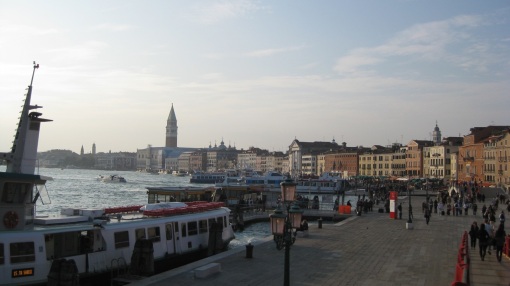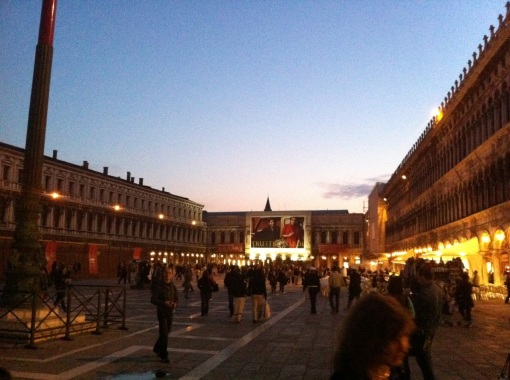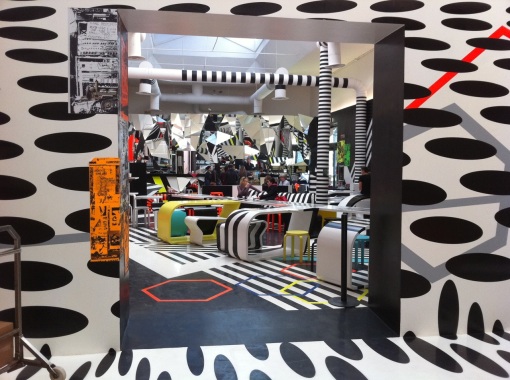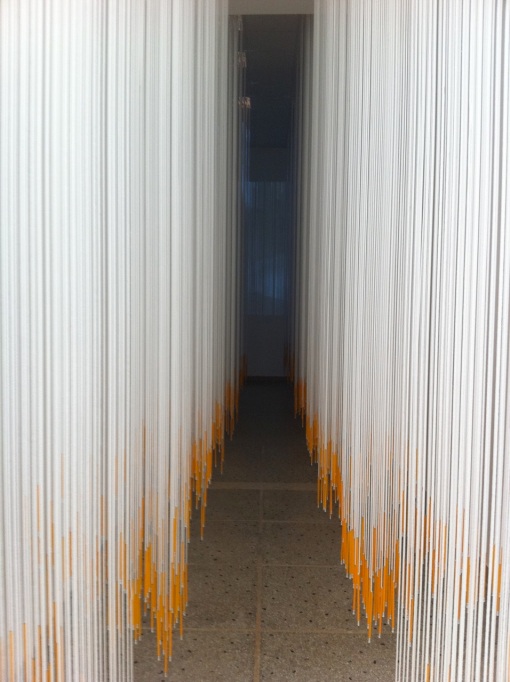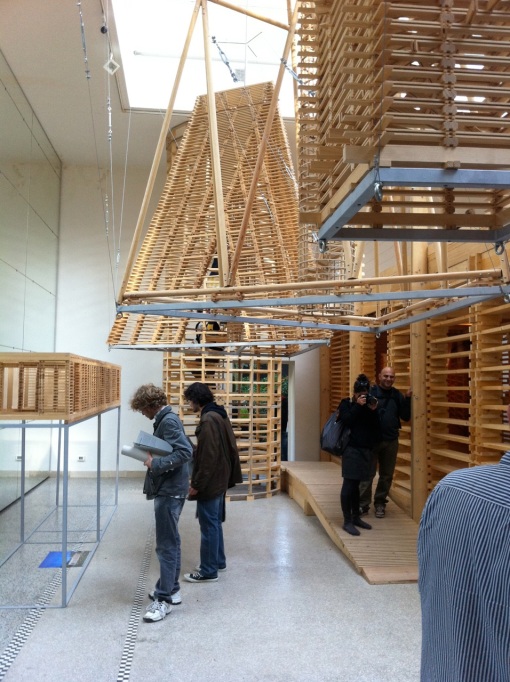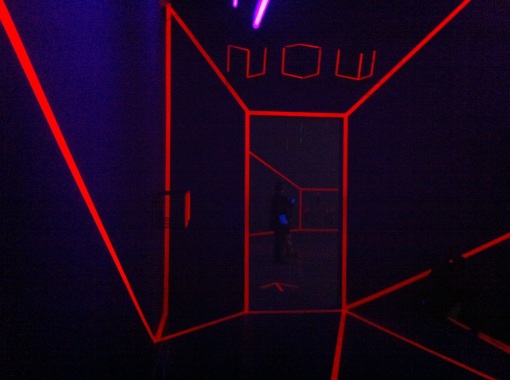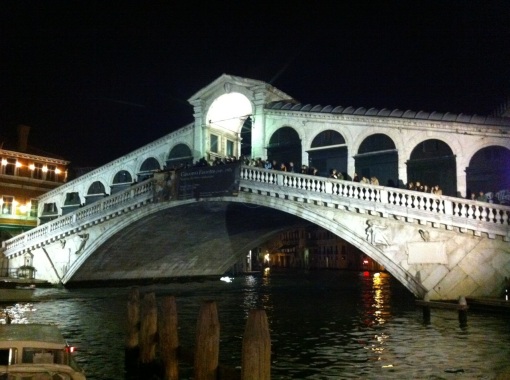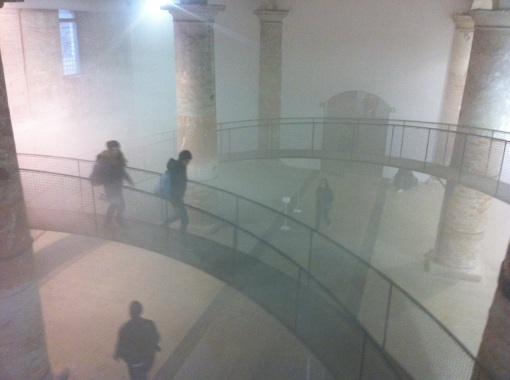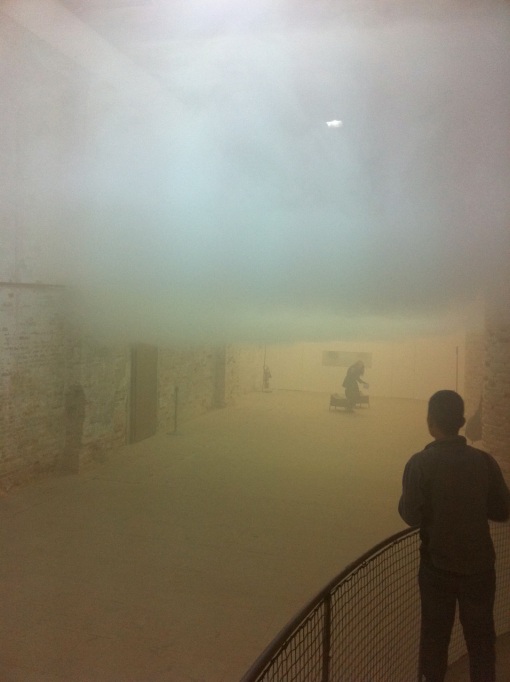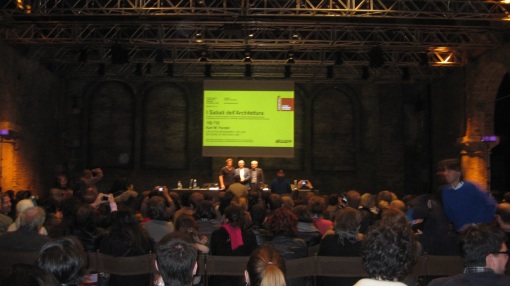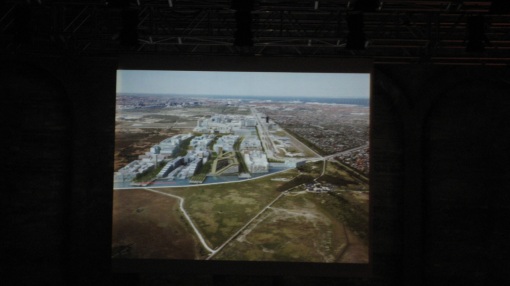Eurotrip Part 2: Paris (1 of 3)
We spent the longest time in Paris, so this post is going to have to be split into 3.
On our last morning in Venice, we woke up pretty early. We had to catch a 10:50am flight. Handing 1 hour over to the time it would take for us to get there by boat, we figured it would be safe to leave the apartment around 8:15am. Little did we know that there is only 1 water bus line (Alilaguna) that goes to Venice-Marco Polo airport, and it comes once an hour. We walked to the Giardini water station and waited for a few minutes. After seeing virtually no taxi stop at the dock, we asked a man how to get to the airport. He told us we had to go to the Arsenale stop and wait there. Upon arriving at that station, we discovered that we had missed the 8:15am taxi, and had to wait another hour. We were all pretty nervous about missing our flight, and wondered whether the girls on the other side of the city had caught the earlier ride. The issue was that Michael and I had to check our luggage, and that requires more time before we board. Getting on the 9:15am taxi and arriving around 10:15am when boarding for our flight was at 10:20 was a bit of a squeeze.
We jumped off the Alilaguna and booked it to the terminal. I ran up to the EasyJet counter with barely 1 minute to spare and told the lady that I was running late. She very calmly said, “too late, I’m sorry, the flight is leaving.” Like the Hulk, I began to feel a sudden surge of anger flow through my blood. The only difference is that I have Israeli blood, and it’s much, much scarier more powerful than green blood. It took me all of 10 seconds to convince her that she needed to take my luggage. Michael stumbled to the counter as I was leaving, but she absolutely refused to check his bag and directed him to the customer service counter. They told us there was no way they could check his bag onto the flight and he’d have to catch the next flight into Paris-Charles de Gaulle Airport instead of Paris-Orly. The rest of us ran to security, cut the entire line, and flew to the last gate in the terminal (of course it was the last one). Turns out there had been a delay because the passengers needed to be bussed to the plane (it wasn’t docked directly at the terminal). We were pretty furious at this point because we stood in line for another 15 minutes, which would have been more than enough time for them to let Michael on the flight and save him another purchase.
When we landed in Paris in the afternoon on October 17, we bought tickets and hopped on the train to Chatelet-Les Halles to check into BVJ Hostel. After some complications at the front desk with deposits, we headed out to explore the area and realized that our location could not have been better – a 5 minute walk to the Louvre. We started off in the plaza by I.M. Pei’s glass pyramid, and headed up the Champs-Élysées towards Arc de Triomphe de l’Étoile.
In between the Louvre and Arc de Triomphe lies Jardin des Tuileries.
By the time we arrived at the top of the Champs, it was nighttime. We took a few night shots of the Arc and the street, and headed back to the hostel – in the morning, we would meet up with Olivier, a visiting professor from USC who would show us around Paris and the Netherlands for the next 2 weeks.

In the morning, Olivier met us in the lobby of our hostel. He was born and raised in Paris, so he was the obvious choice among the USC staff. Additionally, he previously worked for several prominent architects including Jean Nouvel, where he was a partner, Renzo Piano, and Rem Koolhaas of OMA. Olivier is very well-connected, but Paris is still a huge city. Despite all of this, within 10 minutes of our first field studies, he ran into an old friend from Jean Nouvel’s office. This happened several times throughout our stay in Paris. We started off at Ministère de la Culture (Ministry of Culture), designed by Francis Soler + Frédéric Druot.
Next, we passed through the Palais Royal courtyard:
The Centre Pompidou was one of the more interesting projects we visited in Paris. Named after Georges Pompidou, the President of France from 1969 to 1974, the Pompidou houses a large selection of modern art ranging from Picasso, Dali, and Miró. It was designed by Renzo Piano and Richard Rogers from 1971-1977.
Its very confusing from the outside, but once you hear the shpiel, it starts to make more sense. The structure and circulation are pushed to the perimeter of the building, allowing an open floor plan on its interior for the gallery spaces. Additionally, the brightly colored tubes are color-coded for mechanical systems, green for plumbing, blue for HVAC, yellow for electrical, and red for circulation.
The climb to the top of the Pompidou Center was really cool. A series of escalators take you to the top of the building, where you will find gallery spaces and a really expensive restaurant called Georges, with panoramic views of the entire city. The escalators reminded me of the Beverly Center back home as well as the escalators at Universal Studios. The structure sits 2 stories higher than any other building in Paris, and therefore offers views of the Eiffel Tower to Monmarte.
We finished that day by visiting Église Saint-Gervais-Saint-Protais, one of the oldest churches in Paris:
We were able to organize a private tour of Jean Nouvel’s office because of Olivier’s past partnership in the firm. On the day we visited, Nouvel was not present, but we did get to see some of the projects the office was working on, and get a glimpse of how things are run there. They separate different fields of work into different wings of the building, and interestingly, Nouvel oversees each project from start to finish, but doesn’t touch any of the administrative business, including the hunt for new projects. Pretty cool office.
After the tour of his office, we went to see the project that skyrocketed his career. Built in 1987, L’Institut du Monde Arabe is an institute for the promotion of Arab culture in France. It consists of some 200 panels with little operative apertures that control the amount of light that enters the building. It was raining in the morning, so I didn’t get any great exterior shots, but here are a few:
As the pictures above suggest, Notre Dame is visible from the rooftop of the Arab World Institute. And that’s where we headed to next, but first we saw the Memorial to the Martyrs of the Deportation, located at the tip of Île de la Cité. It’s a quiet garden designed by Georges-Henri Pingusson in memory of those deported from France to concentration camps during the years of 1940-1945. It was inaugurated by the then-president Charles de Gaulle on April 12, 1962.
I had been to Paris before, during the summer of 1999 (I remember this because there was a countdown to the turn of the millennium on the Eiffel Tower), but I recalled the Notre Dame being much larger than it really is. Nevertheless, it’s a very impressive church, built over the course of a few hundred years by numerous architects. The high altar was completed first so the sanctuary could be used during the construction of the rest of the building including the central nave. As I progressed from the east to the west facade, I noticed the change in heights which is a reflection of the different styles of architecture – the two ends are pretty radically different.
Intricate wood model inside Notre Dame:
The weather improved significantly during our short visit inside the church:
After the Notre Dame, we crossed the bridge back to our hostel and planned to meet Olivier at the steps of Monmarte that night to enjoy a bottle of wine and “hang” as well as have him explain to us how to get to Villa Savoye in the morning.
By night, it started to rain heavily, and several of us who went to dinner together couldn’t get ahold of the rest of the group. We decided to still go up the steps and check out the top of Monmarte:
When it became unbearable, we took the funicular metro down the mountain. Just as we exited the metro we got a call from the group who had been hanging out in a cozy bar, so we went to join them for a drink.
The next morning, we took a 40 minute train to Poissy, located around 40km northwest of Paris. The reason for this trip was to go see Villa Savoye, one of the most influential buildings in the recent past of modern architecture. It was designed by Le Corbusier, who is himself considered to be one of the most influential architects of the last century, in 1929. The weekend country house is emblematic of Corbusier’s ‘5 points of architecture’, which are: the pilotis, a flat roof terrace, the free plan, strip windows, and a free facade. Once in Poissy, we had to hike up the mountain to reach the Villa, which was about 20 minutes away. On the way I saw the 2nd Bernese Mountain Dog on our Eurotrip (the first of which was in Piazzo San Marco in Venice). We somehow missed the sign to the entrance on our first pass, but eventually found our way in:
The quality of light in the interior spaces are simply amazing:
Villa Savoye was one of the first buildings we studied at USC as 1st Years…we were required to recreate the house using Sketchup in the first few weeks of classes. It was way more impressive in person than I had imagined. If it seems like I’m drinking Corb’s Kool-Aid, I’m not the only one.
This sums up just under half of our time in Paris. The next 2 posts on Paris should be a little shorter.




















































